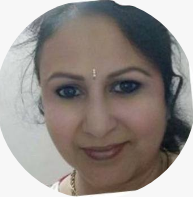Hello, Friends!
We are again here with our second edition of INDUS for 2018. Since our previous edition, we have seen a lot of regional activities happening in various cities; and a few of them have happened for the very first time. One of them is The Leap magazine launched by the Hyderabad team in the presence of media.
This is a big delight to see that our STC community in India is growing with more participation from new cities with a smaller number of professionals. Although Bengaluru, Pune, and Hyderabad dominate with their headcount, cities like Kochi and Coimbatore are not much behind in enthusiasm.
The spirit of India chapter is influencing and providing a platform to the technical communicators in different cities to unite and upgrade themselves with newer trends and technologies. STC India is undoubtedly doing a great job in bringing the documentation professionals from various industries in one place and sharing their good work for the benefit of the businesses.
Despite these activities, we still have friends working in remote cities in minute numbers who do not have the access to these conferences and learning sessions. INDUS being the mouthpiece of STC India, we take this opportunity to carry these pieces of information to the reach of those friends and also to those who miss the opportunity to attend the sessions for some reason.
In this edition of INDUS, we have tried to include contents of varied interest and importance. We have articles that talk about the newer trends like artificial intelligence, analytics, voice assistance, and importance of graphic design in the documentation. At the same time, we have highlighted the pain-points of the software developers in certain organizations who have to perform the role of untrained and inexperienced technical communicators. If Sumayya Fatima advises the budding writers to set boundaries at their workplaces, Sayati Das elaborates the importance of learning new skills for their career growth.
In short, this edition of INDUS assembles diversified topics for its readers – both the beginners and the seasoned professionals.
The edition includes the following articles:
- How Technical is Technical Writing? by Sumayya Fatima describes, in brief, the evolution in technical writing in terms of tools and technologies, and how this evolution has brought changes in expectations from a technical writer. The article also suggests what a technical writer should do to practice a work-life balance.
- Graphic Design Essentials by Rahul Kulkarni tells you the basics and importance of graphic design in modern life, and how you can leverage graphic design in the documentation.
- Designing an Intelligent Content for AI by Ruchi Vohra defines an intelligent content and tells you how to design such a content for artificial intelligence.
- When a Developer Turns a Technical Writer by Soumya. P. Sadanandan depicts a scenario of a development unit where software developers perform the role of a technical communicator, and how they manage to perform this role.
- CONTALYTICS – A Recipe for Fruitful Consumption of Content by Sarah Gideon portrays the use of analytics for calculating consumer engagement and content consumption to strategize improvement in both.
- Voice for Product Documentation by Ravi Kumar Adapa is all about the importance of using a voice assistant for documentation. The article beautifully conveys the message that in near future voice is going to be the new form of documentation support. It also suggests that artificial intelligence is not possible without information architecture, and how you can start with it.
- Go for Excellence; Success will Eventually Follow! by Sayanti Das is an inspiration to those who find it difficult to cope with the challenges at the workplace with emerging trends of newer technologies. The article describes how you can turn challenges into opportunities to get success in career.
Hope you will enjoy reading and find the information interesting! We will, however, be happy to hear from you what changes and enhancements you would like to see in the next edition. Your feedback and suggestions encourage us to do better and more meaningful.
At the same time, we invite your participation by means of articles, blogs, reviews. Just send us your ideas and inquiries at indus@stc-india.org.
Best regards,
Chandna Mitra


Recent Comments